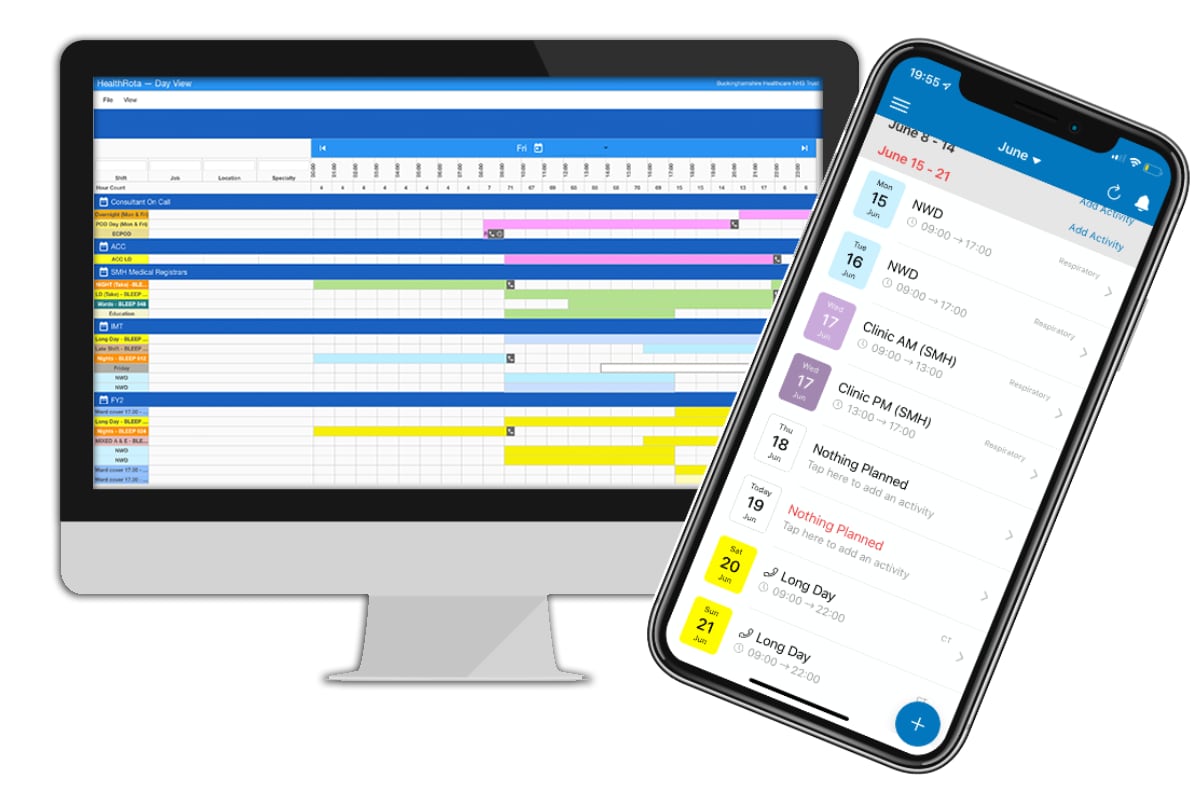Introduction
Stoke Mandeville Hospital is a district general hospital in Aylesbury, Buckinghamshire. It is part of Buckinghamshire Healthcare NHS Trust. The project involved the Division of Integrated Medicine at the Trust.
During the initial COVID-19 pandemic, it quickly became apparent that the Trust’s understanding of its medical workforce deployment was inadequate. With many doctors redeployed from other services, increased staff sickness and COVID-19 self-isolation, the existing manual rostering practices were insufficient. The Trust had no global overview of where doctors were deployed.

Solution
Previously at the Trust, rostering was split between eight rota coordinators running separate spreadsheets with no visibility of each other’s rotas. The initial response to the pandemic was emergency twice daily sitreps to review these spreadsheets, before e- Rostering was proposed to give full visibility of doctors’ deployment.
The software chosen (HealthRota Ltd.) was previously reviewed by the Trust’s Junior Doctors’ Forum, which proposed the software to solve the deployment challenge. Trainees were reporting that unequal deployment during the COVID-19 pandemic was impacting their workload and morale. The solution offered limited contractual tie-in at low cost, so was approved by the Trust and rolled out quickly to support the COVID-19 response. A focus group comprised of Trust management, clinical leaders and trainees approved it.
The rollout was supported by the software developer, with the initial ‘back end’ rollout completed in 3 days. All medical on-call rotas and supplementary departments were online in this timeframe. Within two weeks, all end users had logins to view their rotas and the availability of the wider medical team.
We plan to harness the full power of the new e-rostering software in the coming months. Key to this is the visualisation it offers of the workforce, enabling a more effective deployment of the permanent workforce, thereby reducing the dependency on temporary staffing. We aim to quantify the savings on temporary staffing made, but also review the qualitative data from trainee feedback. Features of the software such as annualisation, flexible rostering and swap requests should improve this feedback by increasing flexibility for medical trainees, improving morale and reducing locum spend.

Results
The effectiveness of the solution was determined through feedback from the rota coordinators, along with before-and-after questionnaires of clinicians using the software. 95% of junior doctors had used the system within one month of launch, with 60% using the mobile application.
Doctors’ understanding of their own and their colleagues’ deployment (using a Likert scale, Mann Whitney U) was significantly improved. The change was well received by rota coordinators, who achieved a greater overview of the deployment of medical staff, anecdotally reducing their dependency on locum staff.
About Buckinghamshire Healthcare NHS Trust
Buckinghamshire Healthcare NHS Trust (BHT) is an integrated provider of acute hospital and community services for people living in Buckinghamshire as well as some people living across the borders in surrounding counties. We provide care to over half a million patients every year in our hospitals, community settings and in people’s own homes. Our vision is to provide outstanding care, create healthy communities and make a BHT a great place to work.
Our patients are at the heart of everything that we do, providing you with safe and compassionate care, every time. Our focus is on providing right care, right place, right time, first time and everything we do is aimed at delivering high-quality care when and where you need it.
Download e-Rostering an Emergency Case Study (1.26 MB)
